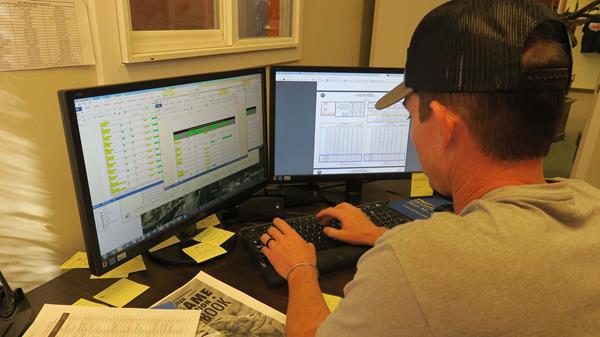
During the first six months of the year, the Huntin’ Fool office is buzzing as multiple departments work together to create state sections and send each issue out by the anticipated press deadline. These state sections require long hours of research in the field, on the phone, and on paper. Our top priority is making sure we are providing our members with the most accurate, up-to-date state information. At times, this requires us to wait for state regulations to be released before we can finalize a state section, but there is much more to the creation of a state section than updating a few numbers after a state’s regulations are released. Within this article, you will find out just what it takes for a state section to be created and printed in our magazine.
To begin, the PHA will take the state information we printed last year and use that as a basis to update the information for the upcoming season. While the regulations may not be released yet, there is still plenty of information that can be gathered. Draw odds and harvest statistics can be found early on in the process on the state’s website. Utilizing draw reports, which contain information on the bonus pass, preference pass, random odds, number of applications, etc., the PHA will calculate the draw odds and harvest statistics for a state and update the information in the tables.
Biologists, outfitters, and Huntin’ Fool members are great resources when the unit profiles in the comments sections of the tables are put together. The information gathered from them includes terrain, types of forage, and trophy potential. Boots on the ground research, member feedback, and biologist and outfitter supplied information are invaluable resources to bringing you the most accurate and up-to-date unit information. In addition, the PHAs gather information for these unit profiles while they are out in the field hunting. They each try to hunt some new areas each season so as to gather new information for the state sections.
Within each state section, we cover specific species information. The write-ups at the beginning of each species section come from facts given from biologists and the personal knowledge the PHA who is writing the state section has on the species. Our PHAs are extremely knowledgeable as they have spent years in the field hunting big game.
Another avenue our PHAs utilize to gather information is watching and/or listening in on state commission meetings. For most of these meetings, an agenda can be printed out beforehand so the PHAs know what is going to be covered and they can be prepared to check if the state is making improvements or changes to their regulations. During the meeting, if an item is approved, it can be checked off right then. If it is not, it is easy for the PHA to make the quick change to the information. Much of the information covered in the commission meeting is what is going to be updated in the regulations, so listening to these commission meetings gives us a head start on updating the information we would need from the regulations.
Waiting on the release of state regulations can be frustrating as that is where we gather the updated information for the state section headers at the beginning of the write-up, tag numbers, season dates, unit/hunt codes, units available, and map updates/changes. However, the state section is completed up to the point of just needing this information so the process of finishing the state section is quick and efficient once the state regulations are released. It is important for us to wait for this information to be released so that we are providing our members with the most accurate information when they go to fill out their draw applications.
Once the PHA has compiled the information and completed their state section write-up, it is passed to the Lead Editor for editing. From there, the state section is passed back in rough draft form to a different PHA to check the statistics. This double check system ensures we are giving you accurate information. Once the state section is signed off in rough draft form, it is given to the graphic designer for the layout phase. Included in this layout is the selection of photos. Photo selection is based upon a number of factors, but two of the biggest are photo quality within the magazine and if the photo is a good representation of what a hunter can expect to see in the state. The photos are used as compliments to the information that is being presented. It is important to note that nearly all of the photos used in the magazine are from the previous year’s season.
After the state section has been designed, it is passed between the Lead Editor, the PHA author, and the Editor-in-Chief. In addition, the state section makes its way to Shandi’s desk in the License Application Department to ensure the application information is correct. In all, it passes between four to five people in the PHA and magazine department. The state section must be approved by the author, the Lead Editor, and the Editor-in-Chief before it is signed off for print. Once that is completed, the state section is ready to head to the printer to be printed and shipped to your doorstep.
State sections provide our members with some of the most valuable information we offer. We take pride in working quickly and efficiently to get you the most accurate and up-to-date information in the business. If you have any questions about our state sections, applications, or unit/species specific information, give our PHAs a call at 435-865-1020. They are a wealth of information and are always ready and willing to help you.